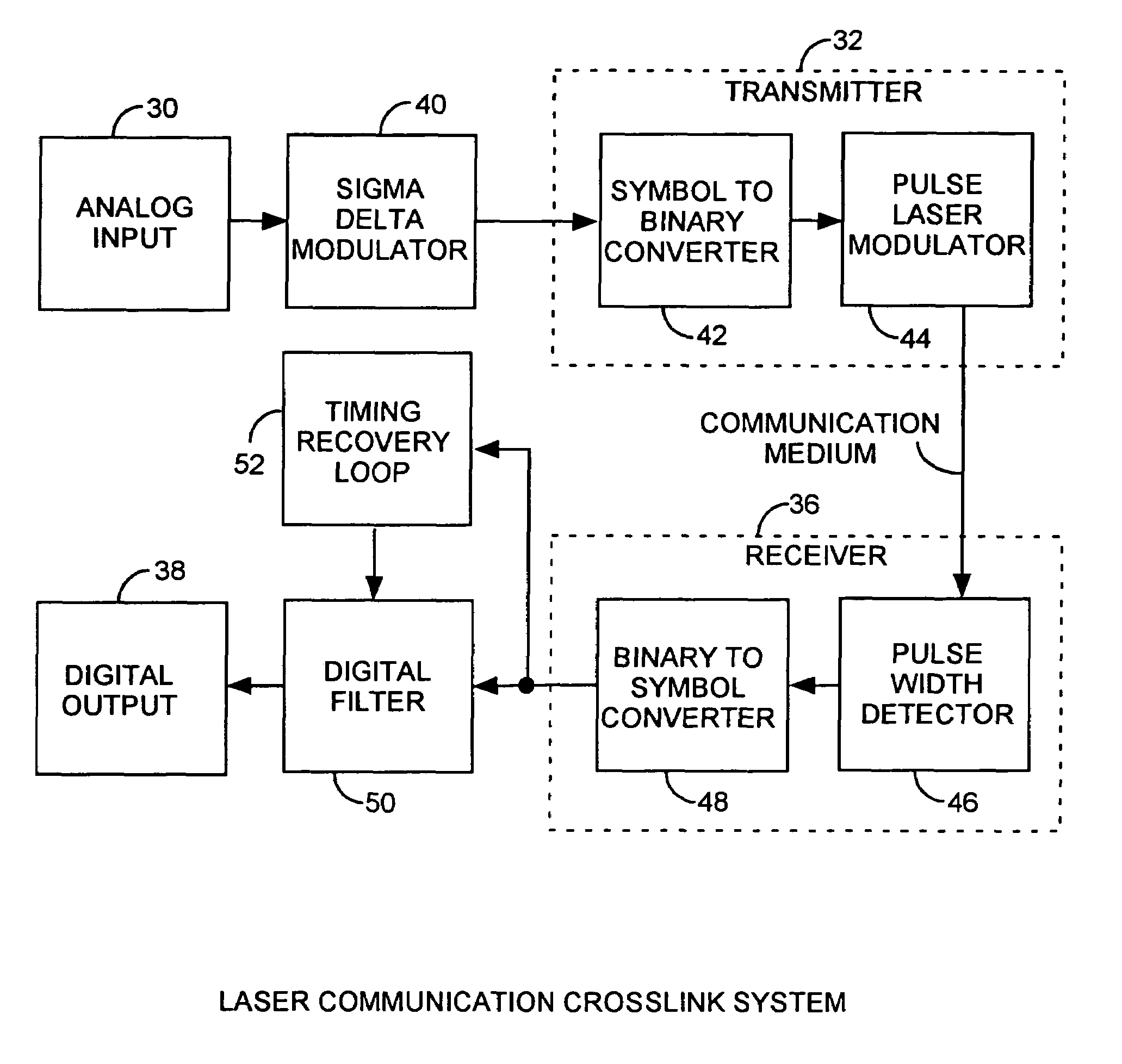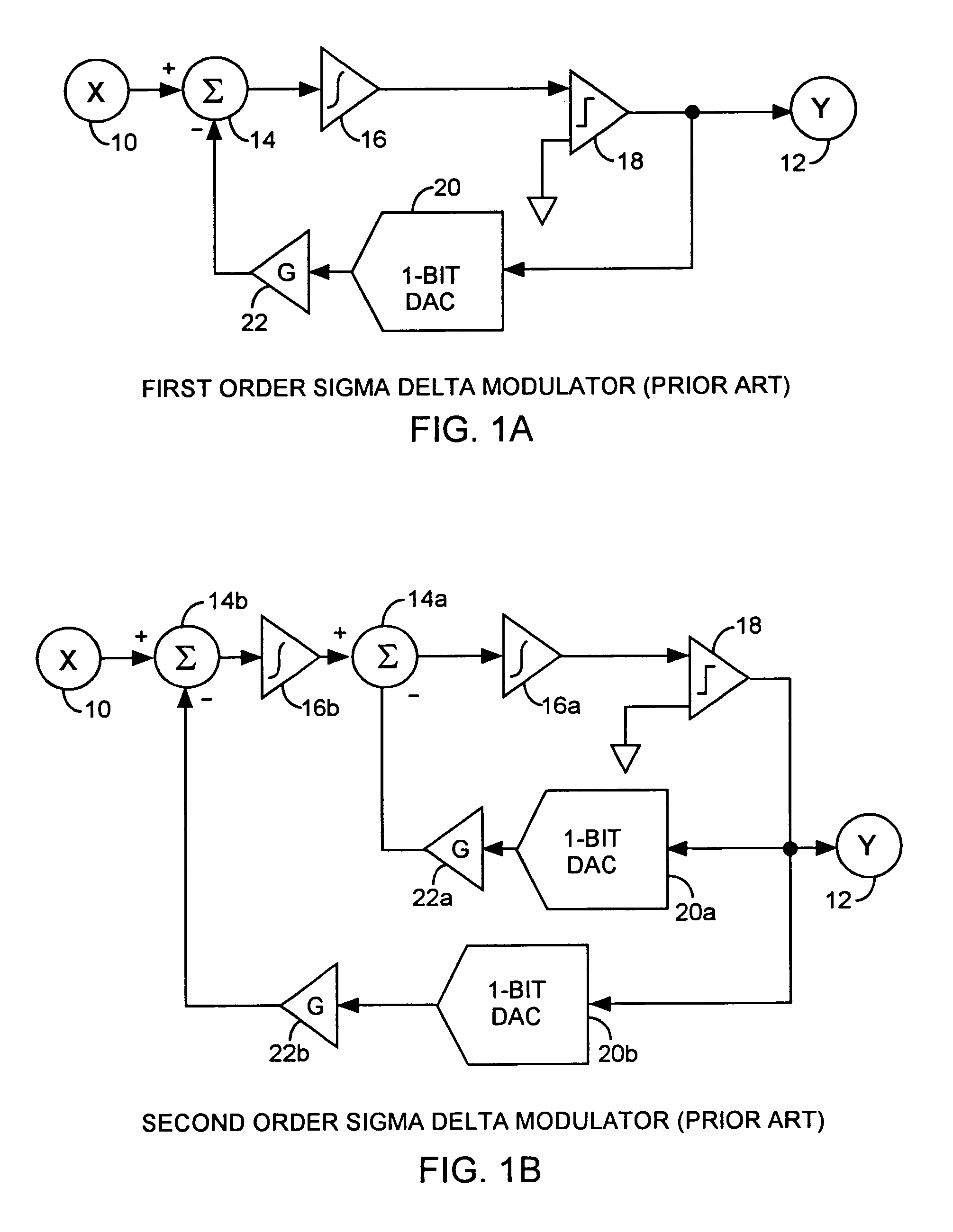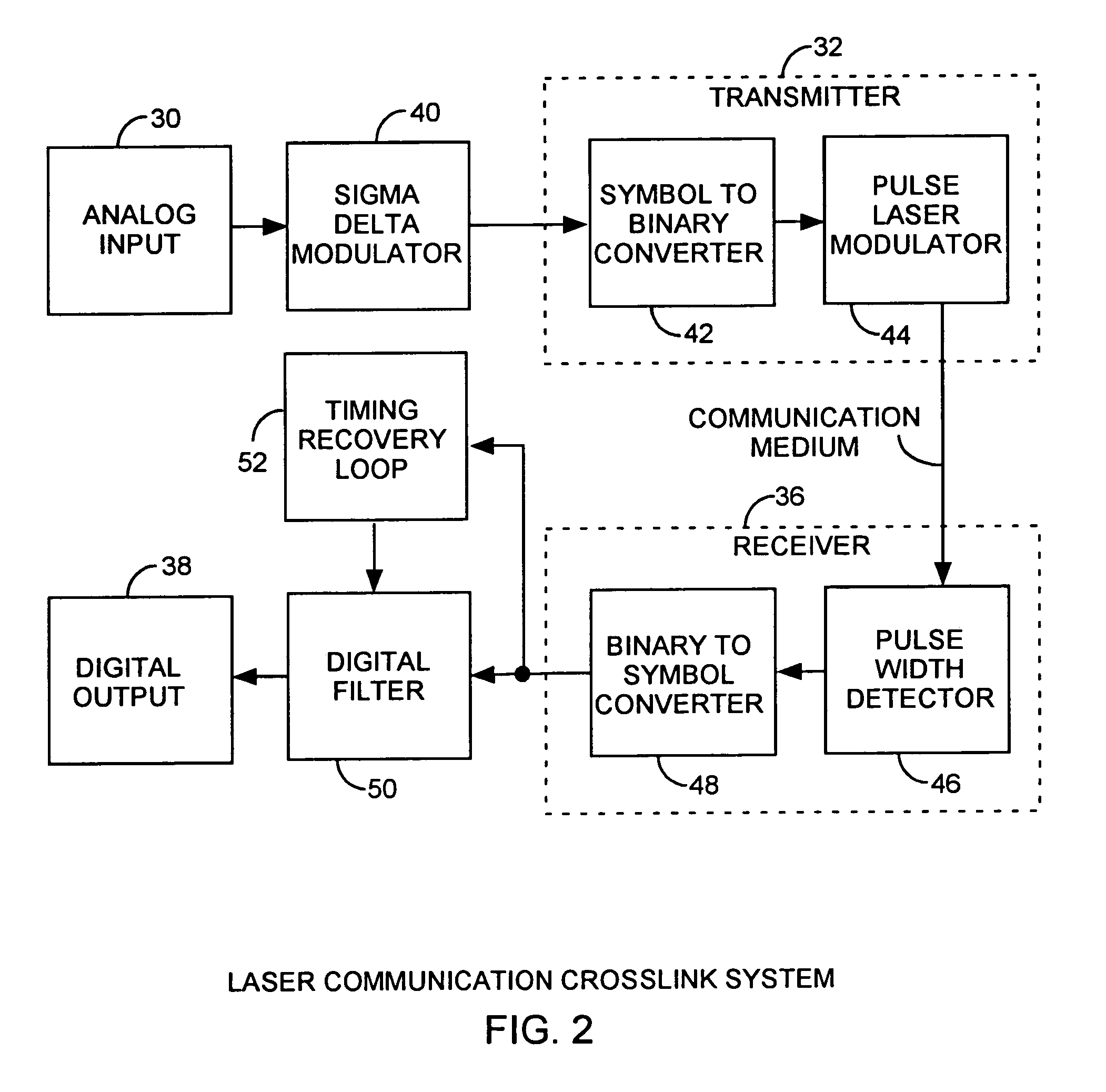Laser communications crosslink system
a crosslinking and satellite technology, applied in the field of communication, can solve the problems of reducing bandwidth efficiency, unable to generate much power for small satellites such as nanosatellites, and redundant error correction data bits, so as to reduce the roll-off requirements and reduce the number of parts. , the effect of less power
- Summary
- Abstract
- Description
- Claims
- Application Information
AI Technical Summary
Benefits of technology
Problems solved by technology
Method used
Image
Examples
Embodiment Construction
[0021]An embodiment of the invention is described with reference to the figures using reference designations as shown in the figures. Referring to FIG. 2, a laser communications crosslink system receives an analog input 30 for communication as a communication signal from a transmitter 32 through a communication medium to a receiver 36 that provides a digital output 38 representing the analog input signal 30. The digital output 38 is an n bit sample of the analog input30. The analog input 30 is modulated by the sigma delta modulator 40 for providing + / −1 binary symbols that are communicated as binary zero and one digital signals. The communication medium maybe a free space satellite or terrestrial laser crosslink or fiber optic cable. The input signal 30 is modulated by a sigma delta modulator 40 providing a + / −1 modulated input signal to the transmitter for transmission from the transmitter 32 over a communication medium. The + / −1 modulated output of sigma delta modulator is receive...
PUM
 Login to View More
Login to View More Abstract
Description
Claims
Application Information
 Login to View More
Login to View More - R&D
- Intellectual Property
- Life Sciences
- Materials
- Tech Scout
- Unparalleled Data Quality
- Higher Quality Content
- 60% Fewer Hallucinations
Browse by: Latest US Patents, China's latest patents, Technical Efficacy Thesaurus, Application Domain, Technology Topic, Popular Technical Reports.
© 2025 PatSnap. All rights reserved.Legal|Privacy policy|Modern Slavery Act Transparency Statement|Sitemap|About US| Contact US: help@patsnap.com



